RUF PORSCHE BTR III MOTRONIC - The Ultimate Single Turbo 911 - Dealer Restored
1979 Porsche 930 RUF Porsche BTR III for sale in Calgary, Alberta, Canada
| Item location: | Calgary, Alberta, Canada |
| Make: | Porsche |
| Model: | 930 |
| Trim: | RUF Porsche BTR III |
| Year: | 1979 |
| Mileage: | 43,500 |
| VIN: | 9119201544 |
| Color: | Maritime Blue |
| Engine size: | 3.4 L Single Turbo |
| Vehicle Title: | Clear |
| Want to buy? | Contact seller! |
Description for Porsche 930 1979
RUF PORSCHE
About the Company
The German company RUF, manufacturer of ultra-desirable and extremely fast 911-based sports cars, needs little introduction to Sports Car enthusiasts - most remember the Road and Track articles from the 1980's and the internets' first viral car video, Fazination, showing Stefan Roser manhandle a Ruf CTR around the Nurburgring. In fact, in the mid-1980's until the introduction of the McLaren F1 in 1993, Ruf Porsches were the fastest production cars that money could buy.
RUF has been constructing, modifying and upgrading Porsche 911's since the 1970's; first with a 'RS' Style 215hp normally aspirated 911, and then a 3.3L version of the 911 Turbo, before Porsche built it. The first RUF VIN car, made after RUF gained German manufacturer status, was the BTR, which was put in limited production in 1983, and continued into the mid 90's with the 964 bodied Porsche's.
In the Road and Track "Top Speed Tests" of the 1980's Ruf Porsches not only had the highest top speed, but also a perfect reliability record. Both the 1984 and 1987 "World's Fastest Cars" were won by RUF with the BTR and CTR respectively. The BTR achieved 186mph in 1984 the owner brought the same car back in 1987 and it hit 187mph, this time with 300,000km on it.
The CTR, which journalists dubbed the "Yellowbirdâ€, graced the cover of the July 1987 Road & Track, and was declared the 'Fastest Car In The World', with Paul Frere reaching 211mph (340km/hr). The Yellowbird is also featured in the video with test driver Stefan Roser driving the car tail-out around the Nurburgring where it achieved a road car record of 8:05, a remarkable time in the day. 0-60mph was achieved in 4.0 sec, 100mph in 7.3sec, and the quarter mile in 11.7 sec@133mph-performance figures that are still very impressive today. The CTR was inspired by Group C racers, the Porsche 956/962 being the dominant machines of the 1980's, and was the expression of Alois Ruf to create the ultimate road car.
The CTR (Group C Turbo Ruf) used a twin-turbo version of the 3.4L engine, with Bosch Motronic engine management from the 962. Power was rated at a conservative 469hp, though dyno results show more than 500hp at the wheel. The 29 CTR's had special aerodynamic bodies constructed, all on the narrow body 911's, with the drip-rails ground off, the rear wiper removed, an aero mirror and special bodywork that added 1" to the rear fenders allowing the narrow body car to run 10" wide rear rims. The front and rear bumpers were replaced with lightweight aerodynamic fiberglass sections. The car was also significantly lightened with aluminium door skins, fenders and trunk lid (similar to the homologated 911 SC/RS of the late 1970's) and it weighed in at less than 2,600lbs. It had racing Recaro seats, a full roll cage by DTM supplier Matter, heat exchangers replaced by a front mounted gas heater, the oil tank relocated to the front compartment, twin turbos and intercoolers mounted on sides of the engine bay, a central air intake, adjustable boost from .75bar (350hp) to 1.2bar (500+hp), a/c delete, new larger diameter fuel lines with larger fuel pumps and 330mm Brembo brakeswith 4 piston calipers inspired by the 962 race car.
About Ruf Cars
Porsche didn't produce any track versions of their cars apart from a few limited production runs to Homologate the 911 for various race series, and this left the door open to RUF to incorporate race-proven componentry into their road cars. You could say that RUF made the first GT2 and GT3 cars before Porsche did.
In the 70's and 80's Porsche was the dominant name in Endurance Racing. Most events like the 24hrs du LeMans, Nurburgring 24 hours, Sebring, Daytona etc. would have half of all the entrants made up of Porsche racing cars. And of course Porsche dominated the podiums as well, in some cases taking 8/10 or 9/10 of the top 10 finishes. If you wanted to win any of these races in that era, you needed a Porsche, and the racing cars were not that different than the cars that were in Porsche Showrooms. In 1979 a Porsche 935 won Le Mans outright, with another 935 (Paul Newman's) in second place - they beat the all the sports prototypes.
Porsche had their factory teams, but also a large number of privateers who they sold cars too. There was a large supplier network, composed of companies such as Bosch Motorsports, Brembo, Mahle, Matter, Recaro, Getrag, etc. that supplied the Porsche factory and all the privateer teams. This supply network of competition parts is what Ruf plugged into in the 80's, working with those motorsports suppliers to develop and supply motorsports-grade components for Ruf's 'Super Porsches'. These cars were then a hybrid of road and race cars. The performance and reliability that Ruf is well known for is due to Ruf's attention to detail, and using these endurance-race proven components.
That is what makes the RUF Porsches of the 80's early 90's special and historically important. Besides being the fastest cars money could buy in their day, they represent the last of an era where a road car could have a legitimate link to the racing cars that were winning top-level motorsport events. The mid-90's RUF CTR-2 and McLaren F1-which started as a road car, and then went on to win LeMans-are the last examples of this. Today's top-tier racing cars have absolutely nothing in common with the road cars. Even the 911 RSR is mid-engined now...
About the RUF BTR
In the early 80's the FIA had Group 4 (Modified Touring) class and Group 5 (Touring Prototypes). Porsche ran their 934 and 935 race cars in the respective classes. This was replaced with the Group B/Group C series starting in 1982 and run for 4 years and which created some of the most fearsome (and dangerous) race cars of all time, including the Ferrari F40, Ford RS200, Audi Quattro S1 etc. Group B required a homologation of 200 road cars.
This is an excerpt from Karl Ludvigsen'sdefinitive book on Porsche, "Excellence was Expectedâ€, about the Group B 911 Turbo:
"For the 1983 season Porsche built six 930's expressly built for racing. Suspension was stiffened with torsion bars up 3mm in diameter to 22mm in front, and 1.5mm at the rear to 27.5mm. Front Anti Roll bars were a thicker 22mm while their rear bars were made adjustable for stiffness. The 930's 917 brakes were good enough to start with, but Porsche was able to make larger 330mm brakes available for 1983. These fitted inside 16" wheels with 9.5" front rims and 11" rear. Constructed much along the lines of the 934, the Group B 930 had an aluminium roll cage and an aluminium cross brace above its 26.5 gallon racing fuel tank and an oil tank in the front compartment.
Working within Group B rules, the engine was given cam timing with more overlap, a larger intercooler and boost pressure raised to 20psi (1.4bar). Output rose to 364hp@5,500rpm and torque increased substantially to 360 ft/lbs @ 4,500. To cope with the higher cylinder head pressures, 935-type head gaskets were installed. Completing the drivetrain was a clutch with sintered metal linings and a gearbox equipped with an oil pump and cooler.
What would Porsche's customers do with a car like this? Why take it to Le Mans, of course! It was a tribute to their confidence in the provisions that Porsche had made in these vehicles that their owners felt they could be subjected to more than 24 hours of flat out speed at Le mans. As a matter of fact, they could. Of the six cars entered in 1983, one retired and two finished well back. The other three were first, second and third in Group B and 11th, 13th and 15th overall. At scrutineering they weighed in at and above the 2,723-pound minimum for their engine size, to which they had to be ballasted by some 200 lbs of lead in the passenger foot well.....It's 0-60mph acceleration took 4.5 seconds and it reached 100 from rest in one-fifth less than 10 seconds.â€
The RUF BTR was inspired by the Group B 911 Turbo but it was a road car, and built to customer specifications. The car could be ordered with flared Turbo bodywork, or the standard 911 sheet metal which was lower in drag and gave a 20km/hr increase in top speed. BTR's built in the 1990's were often upgraded with the more aerodynamic 964 bodywork, and RUF also offered lightweight bumper covers.
The BTR could be built up from a Porsche body-in-white and given a RUF VIN, or a customer car could be modified, or Ruf could source a donor car. It is thought that there were approximately 200 BTR Ruf motors. There were several body styles (narrow or wide body, slant nose, coupe or Cabriolet) and componentry differences-a customer could go through the RUF catalogue and select from a long list of upgrades.
Ruf was in the business of manufacturing individual cars for its wealthy customers, and would build according to the customers wishes and wallet. RUF built some limited series production cars, like the CTR 1 and CTR 2, but a larger number of 'custom' cars that were built to individual specifications. A BTR for instance, could look like a relatively standard 911 Turbo with a standard interior, or it could be a slant nose with an RS interior, lightweight panels, CTR brakes, shaved rain gutters, aero mirrors, etc. etc. There are 5 speed versions and 6 speed, and there are 3.4L engines with the 930 CIS injection, and a fewer number with the more advanced Bosch MP1.2 Motorsports DME. Depending on equipment, there could be a significant difference in price between a 'regular' BTR and a high spec one that had a lot of CTR features.
The Basics of the RUF BTR start with the engine, which had the original partially finned cylinder barrels replaced by ones with air-cooling fins around their complete diameter. The bore was increased giving a new displacement of 3.4L from the original 3.3L. Ruf added unique Mahle Pistons and connecting rods and 935 typecamshafts. The turbo was replaced by a larger KKK K28 unit, and a larger free flowing intercooler was added. The intake manifold was replaced, as was the exhaust. The first BTR engines used Bosch K Jetronic (CIS), but later engines called BTR III, used Bosch Motronic, and had 408hp up from the 374hp (.825bar) of the CIS engines.
The Ruf Motronic system-developed for the CTR 'Yellowbird'- was the first digital engine management system to be fitted to a street-legal Porsche 911 Turbo and had dual injectors per cylinder, custom injector blocks and enormous fuel rails. Motronic was a $10,000 option on a BTR. The ECU is a Bosch MP 1.2, the first dedicated Motorsport ECU, and was shared with the 962, Porsche Tag Turbo F1 Engine, and Group 'B' Rally cars such as the Audi Quattro and Ford RS200. This ECU is designed to fire one set of injectors when the car is off-boost, and then the 2 injectors together when it is on boost.
Additionally, a larger oil cooler was installed in a RUF front spoiler, moving it from the inside passenger fender. RUF single piece Speedline forged rims sized 9x17 and 10x17 ran on Dunlop Denloc tires. RUF offered a complete set of gauges including a 350km/hr speedometer, 1.5bar boost gauge, and Tachometer with the red line turned to near vertical. The cars were lowered and the suspension was stiffened. RUF added an adjustable boost control in the cockpit, changed the steering wheel to a RUF item, and added a RUF tachometer and boost gauge.
RUF modified the standard Porsche 930 4 speed by adding a 5th gear with the help of Getrag-the top two ratios remained unchanged, and the lower 3 ratios were spread to cover the speed ranges formerly served by 2 gears. RUF also improved the shift linkage that was both lighter and more positive than the stock unit. In the late 80's RUF modified Porsche G50 transmissions to take the increased demands of the BTR's prodigious torque while offering a further improved shift linkage and a lighter, smoother hydraulic clutch. The shift gate changed from a 'dogleg' 1st gear on the 930 gearbox, to a conventional gate on the G50.
Top speed was 300km/hr for the narrow body car and 280km/hr for the Turbo 911 body, though the later 964 body kit would have improved this. Acceleration to 60mph was in less than 5 seconds; by reaching 62mph in 4.6 seconds a 3.4 Liter Turbo-Ruf became the fastest accelerating production car ever tested by Auto Motor und Sport. It reached 100mph in only 9.5 seconds. RUF had matched, or even bettered, the performance figures for Porsche's own Group B Le Mans car!
BTR Pricing When New
Pricing of these vehicles is difficult to compare between years and between markets as the value of the USD to DM fluctuated considerably in the 80's and the 90's with the DM losing half its value relative to the USD between 1985 and 1992 (3:1 to 1.5:1). Also federalization costs were substantial in the US, making the cars significantly more expensive in the US. No CTR was ever sold new in the US market.
The price for the engine modifications alone to BTR spec was approximately $usd30,000/45,000DM, the 5 speed gearbox 20,000DM, Motronic Engine Management 10,000DM, and the 330mm brakes were over 10,000DM. The base price for completed vehicles was as follows:
- A standard BTR cost 168,000DM (1984) to 214,000DM (1989)
- CTR was 288,000-328,000DM (1987)
- BTR II (964 Chassis) was 255,000 (1993)
- CTR 2 (993 Chassis) was 425,000DM (1997).
- In Germany a standard 911 Turbo was 125,000DM (1987).
In 1987 the prices for the RUF BTR Turbo Coupes started at $115,000 (in the US). The Slantnose Turbo Cab quoted in Road and Track in 1987 was $150,000 while the list price of a 911 Turbo in the same year was $58,500.
In the 80's RUF set up a network of US dealers, including RUF Western America/Scottsdale Motorsports in Arizona and Exclusive Motorcars in New Jersey. They sold RUF parts and did RUF conversions to customer Porsches. From 1987, when RUF was granted an importation license as a manufacturer by the US, the dealerships were able to sell RUF Vin cars.
According to Mark Bongers book on Porsche and RUF, all in all there were about 400 air cooled RUF VIN and RUF factory converted cars built prior to 1998, on 911, 964 and 993 chassis.
Current Classic Ruf Valuations
The current generation of RUF 911 Based sports cars are achingly beautiful with amazing attention to detail and with dazzling performance to match. They are also extremely expensive; between 450k and 750k Euros per copy, or about triple the cost of the current Porsche 991 Turbo, which is about the multiple that was charged in the 80's and 90's as well. In the 80's a BTR, depending on spec, was roughly double the cost of a stock 911 Turbo, and a CTR was triple. The same ratios hold more-or-less the same today.
There is a hierarchy of values for 'Classic' RUF cars begins with the limited amount of RUF VIN cars such as the CTR series at the top of the value chain at approximately $usd 500,000, next the documented Pfaffenhausen built cars that used Porsche Vin donor, and the RUF distributor modified vehicles after that, and then a Porsche with RUF parts on it at the bottom which might represent only a slight premium over a 930 or none at all depending on what was done to it.
Also most RUF vehicles were custom made to customer requirements, so the spec can be quite different from vehicle to vehicle, with factory documentation being quite important to determine what parts the factory installed on the cars, and which parts were later additions. In todays market, I would suggest the median prices of the Ruf Classic cars would be as follows, though examples may vary by as much as 25%:
1) RUF CTR (1of 29 RUF VIN) $usd500,000
2) RUF CTR (factory conversion, Porsche VIN) $350,000
3) RUF BTR (RUF VIN) $225,000
4) RUF BTR (factory conversion, Porsche VIN) $170,000
5) RUF BTR (authorized dealer conversion, Porsche VIN) $150,000
6) 911 Turbo with RUF parts i.e. 5sp. Gearbox, Wheels $120,000
7) Stock 911 Turbo (1986-1988) $100,000
Recent Sale Results Ruf cars:
1) 1989 RUF CTR (#12 of 29) sold for 425,000 Euros (approx. $500,000usd) through Ruf, 2017.
2) 1984 Ruf BTR (CIS) Ruf Factory Conversion, $usd170,000 high bid against $200k-$250k estimate, Mecum Monterey Aug 2017 This same car was offered at the Mecum Kissimmee Auction in Florida (Jan 4-15, 2018, Lot S209, high bid of $160,000 against an estimate of $usd275,000-$300,000)
3) 1988 Ruf BTR (CIS) Ruf Factory Conversion, Sold at $usd136,052 against estimate of $148k-$170k, Articurial Paris Feb 2017
4) 1986 Ruf BTR III Motronic Cabriolet, Ruf Factory Conversion, sold at $171,180 against estimate of $137k-228k, Articurial, Monaco, July 2017
About this Car
Chassis #: 911 920 1544
Engine: 63F03870 RT9 / BTR34111M
Trans: 650 502 K02405
Mileage: 70,200km
Colour: Maritime Blue with Black RS Interior
Weight: 1,340kg (2950lbs) with full tank of fuel and driver (verified at weigh station)
Est. 1,200kg (2640lbs) dry
YouTube Video Library
1) Pre-Restoration pt. 1 https://youtu.be/_0oy1QcOccM
2) Pre-Restoration pt. 2 https://youtu.be/Qu-ukOGjZ8Y
3) Cosmetic Restoration begins https://youtu.be/_0oy1QcOccM
4) Work in Progress https://youtu.be/xxIbjq-x1Kg
5) On the Road pt 1 https://youtu.be/k0rEwxkLFFE
6) On the Road pt 2 https://youtu.be/t3W1ZC2ss-Y
7) One the Road pt 3 https://youtu.be/k0rEwxkLFFE
8) Documentation https://youtu.be/jnGL1lVSQl0
Flickr Photo Library
https://flic.kr/s/aHskpyNPhK
Original Build (1991):
-3.4L single turbo BTR 408hp engine (@.8bar) with Motronic, twin injectors per cylinder, custom injector blocks and fuel rails, K28 turbo, wastegate, RUF intercooler etc.
-RUF twin outlet exhaust
-Modified G50 transmission with locking differential and hydraulic pedal assembly
-330mm front and rear brakes with RUF/Brembo calipers and Turbo suspension incl. larger torsion bars and anti-roll bars.
-Body modifications to wide body '964' turbo including H4 lights and mirrors
-Ruf 17" wheels, Yokohama street tires and Pirelli Cup slicks.
-Full RUF instrumentation including 350k/hr speedo
-Cockpitadjustable turbo boost control
-Special Grey leather interior with leather dash and centre console and special carpet
-Matter CTR Roll cage, fully padded with attached fire extinguisher
-Race seats with 6 point Sabelt harnesses
-Shaved Rain gutters
-964 body kit including front and rear bumper covers and side sills
Ownership and Service History (https://youtu.be/jnGL1lVSQl0)
Built in 1991/1992 at the Ruf Factory
It started life as a 1979 Porsche 911 SC sold into Switzerland and used as the donor car having 78,000km on it before the transformation into a BTR III for a Porsche Enthusiast and amateur Porsche Racer named Gosse Stielstra from the Netherlands.
The Ruf build sheet is included and describes, in German, Major parts that went into the BTR conversion, and there are 30 pages of back up listing all the individual mechanical parts with part numbers, which total 117,660 DM ($usd78,500 or about the price of a new 928 S4 in 1991). The finished price apparently cost 280,000 DM ($186,000) when a new 1992 964 Turbo was $99,000 in the US.
The documentation is sparse post conversion, but it looks like Stielstra kept the car until at least 1998 and put at least 61,000km on it. It then sold to a Dr. Nonkes between 1998 and 2006. The car was serviced in the Netherlands at a firm called Renntech, who did work for both the previous two owners.
To Canada in 2007
This RUF came to Canada in early 2007 with approximately 67,000km on it, purchased by a guy from Grand Cache, AB who purchased the car in Holland through a family connection. He only drove it a few times, and was basically too large to fit in it. The car was subsequently sold to a stock broker from Lethbridge who had the car for a short time, and then it was purchased by me in 2011 with 67,500km.
Sold to Lawrence Romanosky, Calgary AB in 2011
At this time the engine was removed for a full diagnostic and major service. The plugs were removed and the bores inspected with a scope which were thankfully fine with no scoring or evidence of overheating or pre-detonation. Plugs were all fine. The Turbo was given to Tunerworks in Calgary for a rebuild, and a new Bosch starter was purchased ($1,000). Consumables such as OEM wires, plugs, rotor, distributor cap, filters etc. were sourced from Pelican parts($1,000). 12 remanufactured Bosch injectors were sourced at a cost of $1,000. The entire fuse box, all fuses, battery, fuel pump relay, Throttle Position Sensor, Crank Sensor, battery etc.were replaced in the course of an engine out service, as well as the clutch and ring gear. In all, approximately $12,000 was spent on the car by me to bring the servicing up to date.
Sold to Porsche Centre Calgary in 2013 (Lawrence Romanosky GSM)
The car was listed on Bring a Trailer in 2012 and was sold into Ottawa, and then I bought back in 2013 for Porsche Centre Calgary, as an interesting off-season project for the company. Basically it was an opportunity to do the work to the car that I wanted to do, but this time with the resources of the dealership, and which would not have been possible with my own family obligations.
Restoration
-Full Cosmetic Restoration
-Engine out, Interior out, Fuel tank out, Glass out, body panels off, Colour change to Maritime Blue
-New interior including period Recaro Race RS Race seats, new dash, carpet, headliner, RS door cards
-Complete mechanical refurbishment at Porsche Dealer.
-Over $C100,000 spent at Porsche Centre Calgary not including cost of vehicle, which had another $12k spent on it previously.
At Porsche Centre Calgary, the car received a 'cost-no-object' full cosmetic restoration including a colour change to Maritime Blue, RS interior using period Recaro Race seats, and complete mechanical freshening using only Porsche and Ruf parts. The bills total more than $100,000, not including the cost of the car and it took 3 years.
Cosmos Auto Body, our Porsche authorized body shop, was entrusted to strip the car to metal, remove the interior, glass (engine and gearbox were removed prior) and give the car a quality re-paint and colour change to Maritime Blue - A Porsche 964 RS colour. Some 400hours were spent on disassembly, body preparation and paint.
Every light, reflector, rubber seal, piece of trim, rear 'turbo' spoiler surround, and the windshield were replaced with new Porsche parts. Every part of the exterior is new or has been refinished. RUF aero mirrors were sourced from the RUF factory and installed.
The interior was stripped, and new carpet, headliner, RS door cards, and dash pad were replaced. The sunroof assy was rebuilt. NOS period correct Recaro 'Rally' shell seats in black cloth were sourced and installed with aluminium competition brackets. These are the same seats as fitted to the 964 RS and Speedster, though with one-piece cloth cushions. Schroth 6 point, 2" harnesses are included. All audio equipment was stripped out, and a radio blanking plate was installed. For Authenticity, the interior for this car was modeled after a RUF VIN lightweight BTR (W09TA3349HPR06004), with which this car shares the Recaro Ralley seats, lightweight door panels, roll cage, aero mirrors etc.
Mechanically, the engine and gearbox were removed. The powertrain received a full service including valve adjustment and a complete reseal. The ECU was sent to Bosch Motorsport in Germany and calibrated and fitted with a new EPROM. All hoses and belts were replaced. The flywheel was ground and a new clutch kit from Patricks Motorsport was installed. The wastegate was rebuilt, and the adjustable boost mechanism was serviced . The fan assembly was cryo-blasted, and various heat shields, linkages and brackets were either replaced with new, or refinished. All oil tubes were replaced including the piping from the dry sump to the front mounted oil cooler. The engine bay looks fresh, and there are no leaks. Service invoices at Porsche Centre Calgary total over $60,000.
The underside of the car and the inner wheel wells were cryo blasted to remove road grime, and was refinished. New Michelin PS2's are fitted to original refinished RUF-Speedline 17" rims. The 330mm RUF CTR brake rotors were rebuilt with the aluminum hats refinished and new rotors sourced from RUF ($7k for the rotors alone).
All in all, over 1,000 new parts were used in the restoration at a cost of over $C44,000. The only things that were not touched, because they didn't need it, were the engine and gearbox internals and the suspension. Virtually every other part on the car has been replaced refurbished or freshened.
A significant effort was made to describe and document the history and the restoration in as great detail as possible. There is over 1 hour of combined videos on Youtube, 350 photographs, hundreds of pages of documentation including detailed spreadsheets with every part number etc. etc. I have put over 500km on the car post restoration to sort out all the bugs.
Summary
This is a very high-specification, full documented, Ruf Factory built BTR. It has many 'CTR' features including the shaved rain gutters, and 330mm RUF braking system, and Motronic digital engine management. In fact, aside from the twin turbo engine and wide bodywork it would be a CTR. It has had the benefit of over $C 110,000 ($usd88,000) spent on it over the last 4 years including a cost-no-object cosmetic restoration and complete mechanical refurbishment. It is one of about 400 RUF constructed or converted air cooled 'Super 911's', perhaps 1 of 150 BTR's, and 1 of 50 BTR III Motronics.
Ruf has secured its place as the builder of the ultimate Porsches and one of the ultimate German 'Tuner cars'. The construction and specification of this car is not far removed from the Porsche Factory built Group B 911 Turbos, that scored 1st, 2nd and 3rd in their class at Le Mans in 1983. The car is thoroughly sorted, reliable, and unfussy. And it is an absolute joy to drive; light, precise, totally analogue and incredibly fast - even by modern Porsche Turbo standards. At 410hp and 2,650lbs the BTR III has the same power to weight ratio of our 500hp/3,150lb 991.2 Porsche GT3 4.0, and greater than the 991.2 911 Turbo, but without all the electronics and no power steering of any kind.
Factory built Ruf's do not come to market very often, and they are seldom well documented. This Ruf-Porsche presents a rare opportunity to purchase the ultimate old-school single-turbo Porsche 911.
Be careful though, you want to be paying attention when it comes on boost!
Disclaimer: This car should be viewed as a street legal competition car. It has racing seats and 6 point belts on the drivers side and a full roll bar designed to be used with a helmeted driver. The two crotch straps are currently not installed. The seats will only fit somebody of average build, and they don't have much padding. For taller people we would recommend modifying the seat brackets so the seat sits lower. For larger guys we would recommend changing out the seats which we can help with. For road use we would recommend removing the front section of the roll bar and installing 3 point belts. There is no spare tire, tools, jack, or owners manual with this car. There is no internal front bumper crash structure. There is no A/C. There are no Cat's or emission control equipment (though we can supply a 930 set up). There is no stereo.
Taxes, Shipping etc.
Canadian residents must pay 5% GST. We will assist with shipping logistics. Cost to ship car to Seattle WA, including duty, and transport approximately $usd8k. Cost to ship the car to Europe approx. $usd5,000 not including VAT/ImportTax. Car is in our Showroom at Porsche Centre Calgary. We can assist with logistics.
Payment
We require a wire transfer in the full amount within 7 days of the auction close.
Contact information: Lawrence Romanosky, GSM Porsche Centre Calgary, LawrenceR@Porschecentrecalgary.com, 403-607-8625

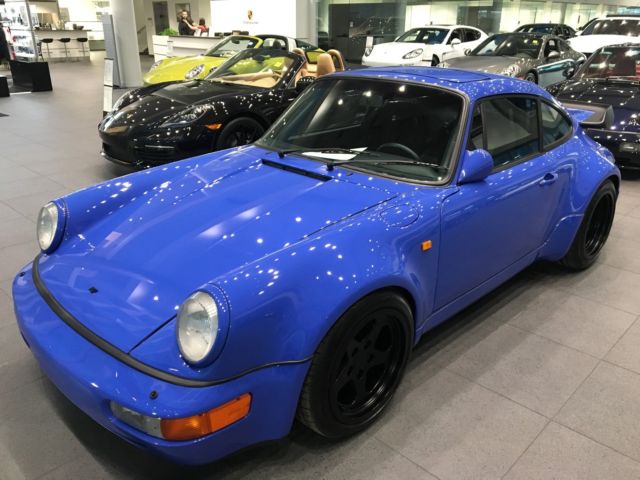
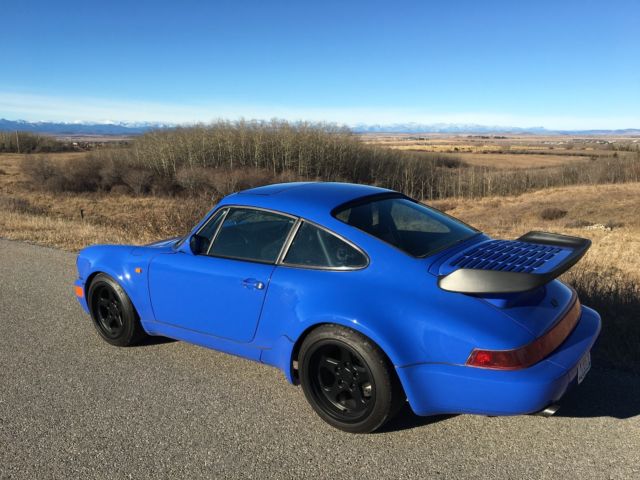
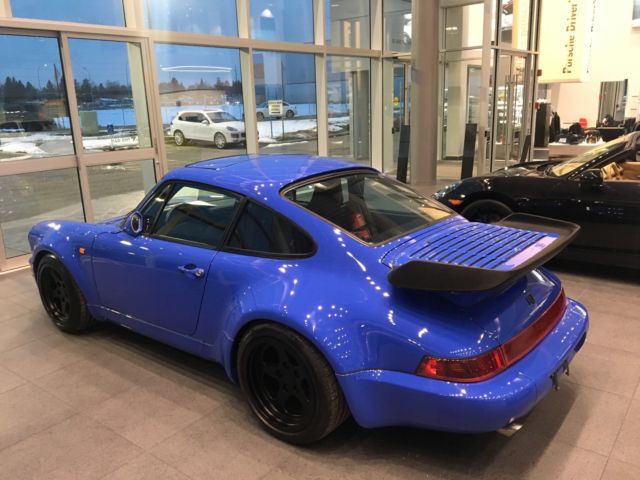
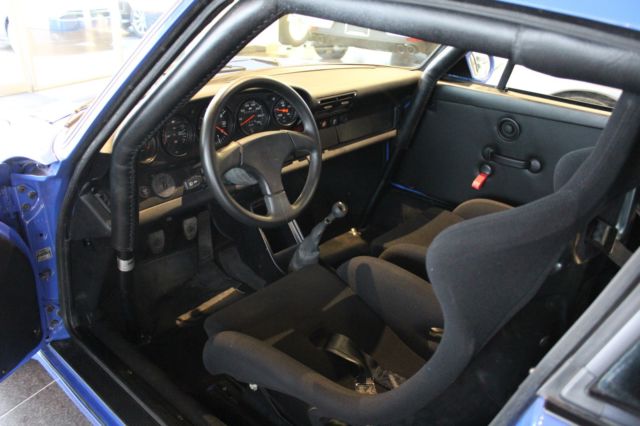

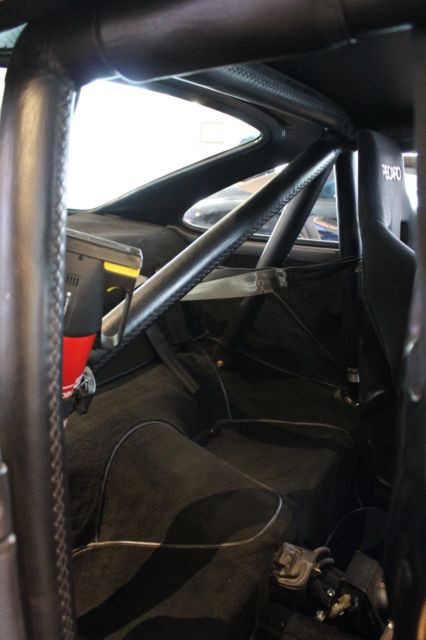
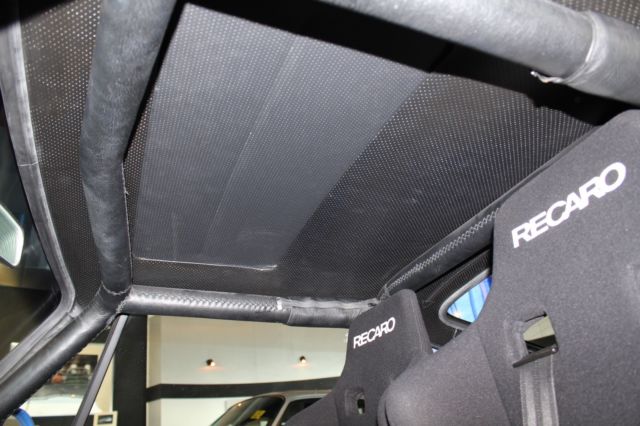


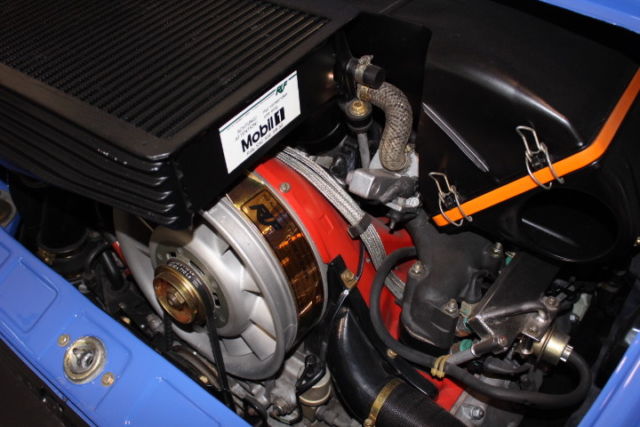

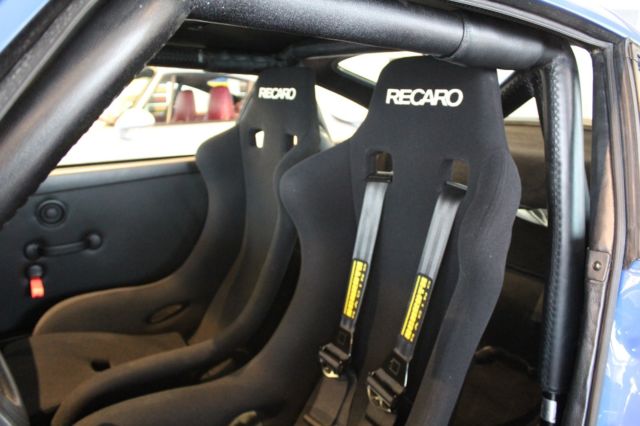
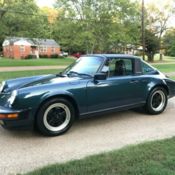 1980 Porsche 911 SC Targa with 3.2 Liter Motronic upgrade
1980 Porsche 911 SC Targa with 3.2 Liter Motronic upgrade
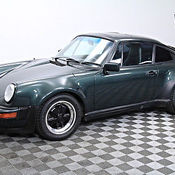 1978 Porsche 930 Turbo. Extremely Clean! Ultimate Collector Porsche! Must see
1978 Porsche 930 Turbo. Extremely Clean! Ultimate Collector Porsche! Must see
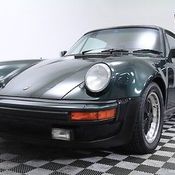 1978 Porsche 930 Turbo. Extremely Clean! Ultimate Collector Porsche!
1978 Porsche 930 Turbo. Extremely Clean! Ultimate Collector Porsche!
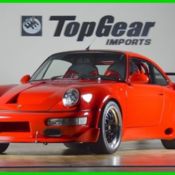 1988 Porsche 930 Turbo Over $80K invested 3.6 Single Turbo
1988 Porsche 930 Turbo Over $80K invested 3.6 Single Turbo
 87 Porsche 944 951 Turbo Coupe 100% Stock Dealer Serviced Rare White Over Black!
87 Porsche 944 951 Turbo Coupe 100% Stock Dealer Serviced Rare White Over Black!
 Single owner, this 1986 Porsche 944 Turbo has just over 70,000 original miles!
Single owner, this 1986 Porsche 944 Turbo has just over 70,000 original miles!
 Ultimate 1986 Porsche 944 Turbo w/ LSD, Fuchs, and Sport Touring Package
Ultimate 1986 Porsche 944 Turbo w/ LSD, Fuchs, and Sport Touring Package
 930 Turbo Carrera, Matching Nos, Fully Restored, Single Owner from New!
930 Turbo Carrera, Matching Nos, Fully Restored, Single Owner from New!
 1992 Porsche 911 Carrera 4 Cabriolet 5 Sp Manual DEALER SERVICED!
1992 Porsche 911 Carrera 4 Cabriolet 5 Sp Manual DEALER SERVICED!